DIY Hydrofoil Construction for Kiteboarding
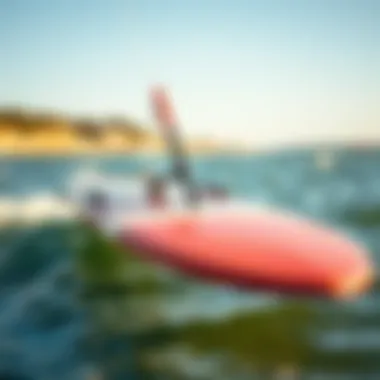
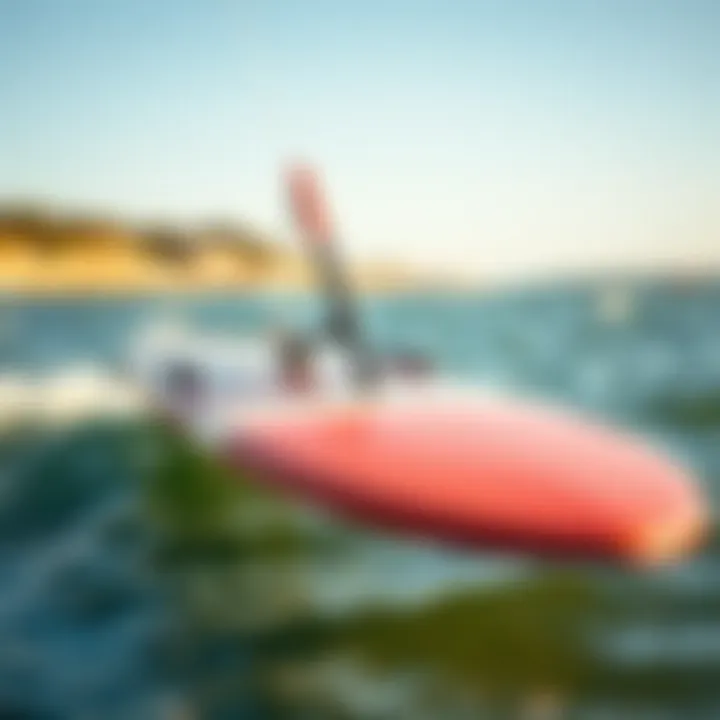
Intro
The allure of gliding over water, propelled by sheer wind power, is a dream many kiteboarding enthusiasts share. In recent years, a new twist has entered the scene, captivating keen adventurers and innovators alike: the DIY hydrofoil. This fascinating piece of equipment promises not only enhanced performance on the water but also a unique opportunity to integrate creativity and craftsmanship into the kiteboarding experience. By understanding the ins and outs of hydrofoil construction, individuals can take their passion to new heights—quite literally.
Before diving into the technicalities of construction, it’s crucial to grasp the significance of gear selection, skill development, and the nuances that come with both. This article aims to provide a comprehensive roadmap for aspiring hydrofoil builders, focusing on how to assemble your own hydrofoil while making informed choices along the way. From understanding the essential components to honing techniques, we will peel back the layers and present valuable insights that will guide readers through their journey in a detailed, engaging manner.
Gear Selection
Choosing the right gear lays the foundation for any kiteboarding venture. With the right equipment, riders can maximize their enjoyment and efficiency on the water. Here, we’ll outline the critical components to consider when embarking on your hydrofoil project.
Types of Kites
When it comes to kiteboarding, the type of kite you choose profoundly influences your performance. Various styles exist, each tailored for specific conditions and rider preferences:
- Foil Kites: These kites inflate with air, creating a wing shape that provides lift. They are generally light and can deliver consistent performance in light winds, making them great for hydrofoil setups.
- LEI (Leading Edge Inflatable) Kites: These are versatile and popular among kiteboarders. Offering stability and power, they perform well in various wind conditions, allowing for an exhilarating ride.
Identifying the right kite depends significantly on the conditions where you plan to ride. Assess wind patterns and typical weather conditions to select the most suitable kite.
Choosing the Right Board
Selecting the perfect board is an equally important part of your hydrofoil undertaking. Here are a couple of things to consider:
- Size and Shape: A larger board can offer more stability, while smaller boards allow for agility and quicker turns. Make sure you match your desired riding style with the appropriate board size.
- Hydrofoil Compatibility: Not all boards are designed for hydrofoils, so double-check to ensure compatibility. Look for boards specifically built for this purpose, as they will have mounting points and proper structural support.
Getting these choices just right will not only affect your overall experience but can also significantly impact your learning curve and progression as a kiteboarder. Poor gear choices might leave you frustrated on the water.
Skill Development
Even the most well-chosen gear can only take you so far without proficiency in essential techniques. If you want to make the most out of your DIY hydrofoil, mastery of specific skills is vital.
Essential Techniques
When first taking to the water on a hydrofoil, some fundamental techniques can significantly enhance your experience:
- Start Slow: Begin with flat water and gradually build up to choppy conditions. Learning to balance on the hydrofoil is crucial.
- Body Position: Maintain a strong core and keep your weight slightly forward on the board. Adjusting your body position dynamically can help with lifting off the water.
Progression Tips
As you gain confidence, it’s time to take it up a notch. Here are a few tips to keep climbing the skill ladder:
- Practice Makes Perfect: Consistent practice is key. Try to put in regular time on the water to get accustomed to the sensations and challenges hydrofoiling presents.
- Watch & Learn: Follow seasoned riders or instructional videos online to pick up techniques and tricks that can significantly aid your progression.
Kiteboarding can be both thrilling and rewarding, and DIY hydrofoiling adds a unique flair to the sport. Proper gear selection and dedication to skill development are essential steps that will empower you, not just to build a hydrofoil, but to elevate your entire kiteboarding experience.
"The best way to predict the future is to create it." - Peter Drucker
With the right approach and mindset, the world of DIY hydrofoils can open up opportunities for kiteboarding enthusiasts to transcend the ordinary, pushing the boundaries of what is possible on the water.
Preamble to Hydrofoils
In the realm of kiteboarding, the hydrofoil stands to be a game changer, transforming the way enthusiasts engage with the water. At its core, a hydrofoil is designed to lift the rider above the water surface, dramatically reducing drag and allowing for a smoother ride across various water conditions. This section will explore the crucial elements that make hydrofoils essential for kiteboarders, delving into how they work and their myriad benefits.
Understanding Hydrofoil Mechanics
To truly appreciate hydrofoils, one must first grasp their basic mechanics. A hydrofoil consists of a wing that operates underwater and a mast that connects this wing to the board. The interaction between the water and the wing forms lift, similar to how an airplane wing operates, albeit in a different medium. As you accelerate, the wing generates lift, raising the board and rider above the water surface. This not only enhances speed but also provides an exhilarating sensation of flying, making kiteboarding feel almost surreal.
When considering a DIY hydrofoil project, understanding these mechanics becomes paramount. For instance, the angle of attack and the design of the wing significantly influence performance. A well-angled wing can produce optimal lift for lighter winds while maintaining stability, ensuring a consistent ride. By experimenting with these elements during construction, kiteboarders can create a personalized hydrofoil tailored to their specific riding style.
Benefits of Using Hydrofoils in Kiteboarding
Hydrofoils offer a multitude of advantages that can invigorate a kiteboarding experience. Here are some key benefits:
- Increased Speed: When a hydrofoil lifts the rider above the water, drag is minimized, allowing for higher speeds.
- Smooth Ride: Riders feel less chop and wave interference, translating into a more enjoyable ride, especially in rough conditions.
- Extended Ride Time: With hydrofoils, athletes can kiteboard in lighter winds that would otherwise not be viable for traditional kiteboarding, leading to longer sessions.
- Versatility: Hydrofoils can adapt to various styles—from freestyle to long-distance touring—catering to a wider range of kiteboarders.
The adoption of hydrofoils is not merely a trend; it's a reflection of the sport's evolution. For kiteboarding enthusiasts willing to tweak, experiment, and tune their equipment, crafting a hydrofoil could unlock a new world of possibilities on the water. As we continue through this guide, the journey of understanding, building, and refining your very own hydrofoil will unfold, ensuring you ride with comfort and style.
Conceptualizing Your DIY Hydrofoil
Getting to grips with the idea of a DIY hydrofoil is no small task, but it’s one that can significantly shape your kiteboarding experience. It’s like sketching out a plan before charging into a project—you’re setting the stage for what could become your ultimate ride on the water. Dedicating time to conceptualization is crucial as it lays the groundwork and keeps your project focused.
When diving into the DIY world, the first thing that pops up is assessing your specific needs and preferences. Every kiteboarder has their own style, from the free-spirited thrill-seeker to those who prefer a more technical approach. Understanding your requirements means considering factors like your skill level, the types of water conditions you'll encounter, and the kind of performance you expect—much like picking the right tool for the job.
Equally important is choosing the right materials for your craft. This part is like piecing together a jigsaw puzzle; each material has its own role that contributes to the final picture. We’ll dig into some critical components in the upcoming discussions. It’s vital to keep in mind that your choice of foils, masts, and board materials won’t only impact performance but also affect the durability and ease of maintenance of your hydrofoil.
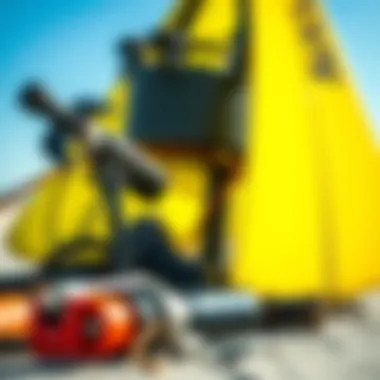
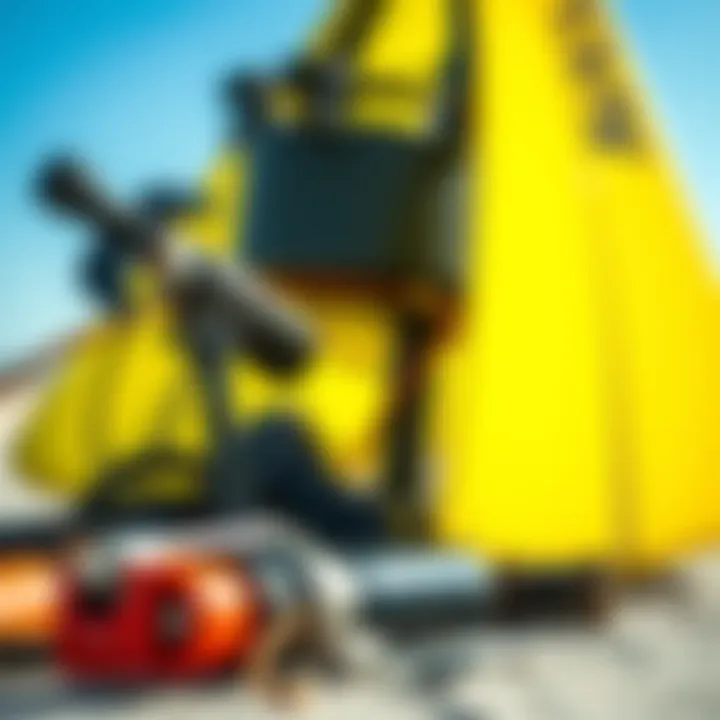
In summary, when you’re conceptualizing your hydrofoil, it’s not just about what looks good on paper. It’s about aligning your goals, preferences, and practical considerations to create a setup that feels right under your feet.
"A well-laid plan is half the battle; it’s the road map that guides your creativity and effort."
By beginning with thorough consideration, you set up a framework that will support each stage of the development process, from design to the final assembly.
Assessing Your Requirements
Before rushing into building your hydrofoil, it’s essential to take a step back and thoroughly assess your requirements. The first consideration is your skill level—are you just starting out, or have you been kiteboarding for years? If you’re a beginner, a simpler design may suit you best, as you become comfortable with the dynamics of hydrofoiling. On the flip side, seasoned riders might be looking at performance-driven designs that allow for greater speed and agility.
Beyond skill level, think about where you’ll be riding the hydrofoil. Is it flat water, or are you aiming for choppy waves? This context informs the dimensions and design specifics of your hydrofoil.
It's also key to have a budget range in mind. Building a hydrofoil can become quite the investment, and sometimes, choosing high-end materials can lead to over-spending without necessarily improving performance for beginners.
Choosing the Right Materials
The materials you select for your DIY hydrofoil play a crucial role in its performance and longevity. Each component from foils to masts and boards carries characteristics that can enhance or hinder your experience. Let’s explore this further.
Foils
When we talk about foils, we're diving into the heart of your hydrofoil. The foil design impacts lift and stability, making it a foundational element. A well-designed foil has an appropriate aspect ratio, which contributes to its efficiency and handling. You might favor wings with a higher aspect ratio for greater lift at speed or a lower aspect ratio for stability at slower speeds.
Many enthusiasts prefer materials like carbon fiber due to its exceptional strength-to-weight ratio, though it can escalate costs. Conversely, aluminum is a budget-friendly option with significant durability; however, it can be heavier, which could affect performance. Ultimately, the goal is to strike a balance between weight, durability, and performance based on your riding style.
Masts
Next up, the importance of masts in the assembly cannot be overstated. Masts connect the foil to the board and must provide both stability and strength. Lengths range widely; shorter masts may offer increased maneuverability, while longer masts can help you glide over rough water conditions, reducing the impact of chop.
Most masts are made from either aluminum or carbon fiber. Carbon offers a lighter and stiffer option, greatly enhancing performance but comes with a higher sticker price. On the other hand, aluminum may be heavier, but it provides a robust backbone for your hydrofoil, ideal for beginners just learning the ropes.
Board materials
Lastly, let’s examine board materials. The right board is essential for the overall experience. Lightweight choices such as epoxy or fiberglass boards are popular and provide great buoyancy, making them easier for beginners to handle.
You might also consider a wooden board for a unique feel and aesthetic, though this could come with a trade-off in terms of durability and weight. Boards come in various designs to enhance trick performance or stability, so choosing one that aligns with your riding style is key.
Design Fundamentals of Hydrofoils
Understanding the design fundamentals of hydrofoils is critical for kiteboarding enthusiasts eager to create their own DIY hydrofoil. A well-designed hydrofoil can significantly enhance performance and stability, allowing riders to experience that feeling of gliding effortlessly over water while keeping the board elevated. The interplay of various design elements—ranging from shape and size to weight distribution—dictates how a hydrofoil operates under different conditions. Overlooking these principles can lead to issues in performance, stability, and overall ride quality.
Hydrodynamics in Hydrofoil Design
Hydrodynamics plays a significant role in how a hydrofoil interacts with water. When considering hydrodynamics, one must focus on factors like lift, drag, and thrust, as these will dictate the efficiency of the hydrofoil’s design. Essentially, lift is the upward force that counteracts gravity and propels the rider above the surface. To enhance lift, enthusiasts frequently experiment with the shape of the foil. Profiles that are streamlined tend to generate more lift with less drag.
- Aspect Ratio: This refers to the length of the foil relative to its width. A higher aspect ratio can improve lift-to-drag efficiency, making for smoother rides at higher speeds. However, this might come at the cost of stability, so finding a sweet spot is vital.
- Foil Shape: The curve of the foil, often referred to as its camber, greatly influences lift. A deeper camber can lead to greater lift at lower speeds, which is ideal for beginners.
- Angle of Attack: This is the angle between the foil and the water flow. Adjusting this can help in harnessing lift effectively, but too high of an angle can lead to stalling.
In short, the right balance within these aspects can make a world of difference. Getting them right means more fun and less frustration on the water.
"A well-designed hydrofoil doesn't just float; it dances on the water, embracing every wave and breeze."
Balancing Stability and Performance
Finding the balance between stability and performance is such a juggling act for anyone tackling hydrofoil design. On one hand, increasing performance may lead to a more slippery ride, while stability often requires a broader footprint that can limit speed. Hence, the design process commonly involves trade-offs.
- Width of the Mast: A wider mast often improves stability, making it easier to control the hydrofoil, especially for beginners. However, too much width can create added drag, hampering speed.
- Volume of the Board: More buoyancy means users can maintain stability even if their skills aren’t top-notch. Yet, a bulkier board can slow down maneuvers, which may not satisfy experienced kiteboarders looking for agility.
- Weight Distribution: How weight is distributed affects how the hydrofoil responds during riding. Keeping the weight centered can bring about more control, but experimenting with forward or backward adjustments could yield varying ride dynamics.
Tweaking these design factors can lead to a custom hydrofoil that suits individual preferences and riding styles. Engaging with local or online forums like Reddit can also offer valuable insights and innovations from fellow kiteboarders who might have faced similar hurdles.
In summary, focusing on the design fundamentals lays the groundwork for crafting a hydrofoil that not only meets expectations but elevates the kiteboarding experience. Enthusiasts are encouraged to see every aspect as interconnected, taking time to analyze and determine what works best for their unique needs. The path to creating the ultimate DIY hydrofoil is often trial and error, but with the right knowledge and a willingness to adapt, progress will surely follow.
Essential Tools for Construction
When it comes to crafting your own hydrofoil, having the right tools at your disposal cannot be overstated. Essential tools make the difference between a smooth sailing project and a frustation that leads to wasted materials and time. Building a hydrofoil demands precision and careful craftsmanship, and the tools you choose can greatly impact the overall success of your endeavor.
Hand Tools versus Power Tools
With any DIY project, knowing the difference between hand tools and power tools can set the stage for how well you work. Hand tools, such as hand saws, files, and wrenches, offer a level of control that can be crucial when making intricate cuts and measurements. They are typically lighter and allow for a more tactile feel, essential when working with delicate materials like composite sheets or wood.
On the flip side, power tools, which include drills, sanders, and electric saws, speed up the process significantly. For larger cuts or extensive sanding, power tools can save you a significant amount of time and energy. However, they require a higher level of respect and knowledge to operate safely and effectively. A balanced approach, using both hand and power tools, allows for flexibility and efficiency in creating your hydrofoil.
"Having the right tools is just as important as having the right materials. It’s not all about power—sometimes, finesse makes the difference."
Safety Equipment and Precautions
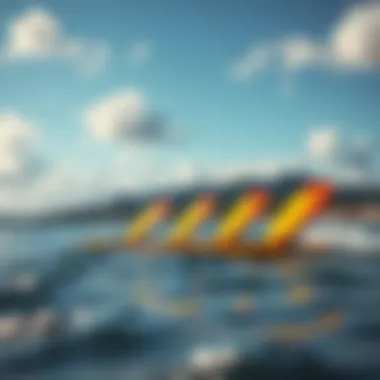

Safety should always be a top consideration in any construction project. While creating your DIY hydrofoil, various hazards can arise, from sharp tools to dust and splinters. Therefore, investing in proper safety equipment is essential. Here’s a short checklist of recommended gear:
- Safety goggles: Protect your eyes from flying debris or dust if you’re working with saws or sanders.
- Dust masks: When sanding or cutting materials, dust can be a nagging issue, so masks provide assurance that you can breathe easy.
- Gloves: Keep your hands safe from sharp edges and splinters, especially when handling raw materials.
- Ear protection: Power tools can be noisy, so consider using earmuffs or earplugs to protect your hearing during intense operations.
It's not just about having the gear; knowing how to use it properly makes all the difference. Practice safe handling techniques, ensure your workspace is clean, and always follow the manufacturer's instructions for tool operation. A cautious approach minimizes accidents and maximizes productivity.
By focusing on the appropriate tools and safety measures, you're laying the groundwork for a successful hydrofoil project. These choices reflect not only on the quality of your work but also ensure that your experience in the DIY space remains positive and rewarding.
Step-by-Step Assembly Process
The assembly process of your DIY hydrofoil lays the groundwork for all future kiteboarding adventures. Understanding this process not only helps in creating a functional piece of equipment but also enhances your connection to the craft. A clear, step-by-step outline ensures that enthusiasts can follow along with ease, avoiding the pitfalls that often accompany DIY projects. Besides, you gain a sense of accomplishment as each component comes together, transforming raw materials into a refined tool for the ocean.
Creating the Hydrofoil Wing
The hydrofoil wing plays a crucial role in lift and performance. It's the very part that slices through the water, allowing you to rise above the surface with grace. Typically crafted from lightweight yet strong materials like carbon fiber or high-density foam, the wing design requires careful consideration of both shape and size to achieve optimal performance.
- Choosing the Right Shape: Research airflow dynamics to decide on the most effective wing shape. For instance, a larger surface area might offer more lift but can also create drag.
- Cutting the Wing:
Once your design is finalized, proceed to sketch out your wing shape on your chosen material. Use precise tools for the cutting process; this avoids messy edges that could affect aerodynamics. Sand the edges carefully to ensure a smooth finish. - Finishing Touches:
Apply a sealant for waterproofing, adding durability to your wing. Some experts suggest adding decorative elements as they won’t just boost aesthetics but can help with visibility in different water conditions.
Constructing the Mast and Mount Assembly
Here comes the backbone of your DIY hydrofoil. The mast connects the wing to the board and is crucial for stability once you're airborne.
- Selecting Materials:
Here, aluminum or carbon fiber works well due to their strength-to-weight ratio. Choose a width that balances strength with flexibility, allowing for some bend without breaking under stress. - Assembly Process:
- Testing the Setup:
After assembly, test the mount with the wing in a secure setup before you attach it to the board. Minor adjustments can vastly improve the overall experience.
- First, cut the mast to your desired length. A longer mast can enhance lift but may lead to balance issues.
- Next, the mount assembly should connect securely with the wing and the board. Make sure to check compatibility—consider dimensions and fitting.
Integrating the Hydrofoil with the Board
This step is where all your preceding work begins to take physical form. The integration of your hydrofoil and board is pivotal for both function and safety.
- Positioning:
Align your mast and wing with the board while ensuring that they are centered. This balance aids in achieving consistent performance. - Securing the Connection:
Use screws or bolts to secure the mast to the board firmly. It helps to pre-drill holes to prevent splitting the board material. - Final Checks:
With everything in place, double-check all connections and ensure there are no loose components. A tight inspection here can avert difficulties on the water.
Remember, the quality of your assembly will greatly influence your kiteboarding experience. Take your time, double-check everything, and have a blast riding the waves.
Armed with this step-by-step assembly guide, you’re set to embark on creating a custom hydrofoil that suits your style and needs. Don't underestimate the learning curve; each project is a chance to refine your skills and deepen your understanding of the mechanics of kiteboarding.
Testing Your DIY Hydrofoil
Testing your DIY hydrofoil is a pivotal aspect in your journey as a kiteboarding enthusiast. Once you've invested time and resources into constructing your hydrofoil, ensuring it performs to your expectations becomes paramount. The results of your tests not only reflect the quality of your work but also significantly influence your overall experience on the water. With a well-tested hydrofoil, you’ll enjoy smoother rides, improved stability, and the thrill kiteboarding offers at its finest.
Initial Stability Tests
The primary step in gauging your hydrofoil's readiness involves stability tests, providing insights into the performance characteristics and usability. Stability considerably affects safety and enjoyment while kiteboarding; it’s the foundation upon which all other metrics rely.
Start by finding a calm body of water, free from excessive waves and strong currents. This controlled environment allows you to focus purely on the stability of your hydrofoil. Begin with a slow take-off, gradually increasing your speed while paying close attention to how the hydrofoil responds. Here are a few key indicators to observe during initial stability tests:
- Consistent Lift: As you graduate from a standing start to cruising, your hydrofoil should generate a steady lift without excessive rocking or shaking. Any abrupt movements could signal design flaws.
- Responsiveness: Your hydrofoil should react predictably to shifts in weight and the turn of the kite. This predictability eases control and allows you to make fine adjustments while riding.
- Comfort: A comfortable ride is non-negotiable. Pay attention to how the hydrofoil feels beneath your feet. If any discomfort arises, you may need to reconsider your design choices.
Once you've gathered enough data, jot everything down. This documentation will aid you in pinpointing issues for future adjustments. Each test drives a deeper understanding of your craft.
Performance Adjustment Techniques
After conducting initial stability tests, the next logical step is tuning performance. This aspect focuses on fine-tuning your hydrofoil to match your riding style and preferences. Like a maestro with an orchestra, each adjustment contributes to the overall harmony of your ride.
Consider the following adjustment techniques:
- Wing Angle Modification: Changing the angle of attack impacts lift and drag. Tiny tweaks can dramatically alter hydrofoil performance. Experiment by increasing or decreasing the wing's angle to find your sweet spot.
- Weight Distribution: The placement of your weight on the board significantly influences the ride. Shifting your weight forward or backward will affect how deep or shallow the hydrofoil sits in the water, leading to different handling characteristics.
- Foil Positioning: Adjusting the foil's position relative to the board can optimize stability and performance. Experiment with various positions to discover what best suits your riding style—some prefer more forward, while others might lean back.
Always remember, testing is an iterative process. Document the changes and outcomes to refine further your hydrofoil’s performance over time. Through diligent testing and adjustments, your DIY hydrofoil will reach its full potential, providing exceptional experiences on the water.
"Success is nothing more than a few simple disciplines, practiced every day."
The meticulous nature of testing and adjusting is an essential part of your adventure in DIY hydrofoiling. Share your findings with fellow enthusiasts, and learn from their experiences. Just as the sea is expansive, so too are the opportunities for innovation and improvement in hydrofoil design.
Maintenance and Troubleshooting
Maintenance and troubleshooting are crucial aspects of owning a DIY hydrofoil, especially for kiteboarding enthusiasts who rely on these designs for exhilarating water experiences. A little diligent care can mean the difference between a smooth glide over the waves and facing potential disasters out on the water. By establishing a solid maintenance routine, you ensure that your equipment stays in top form and performs to its fullest potential.
In this section, we’ll explore care strategies and common issues that might arise during your hydrofoil adventures. Knowing what to look for and having sound solutions in your back pocket can save you time and headaches down the line.
Care for Your Hydrofoil
Proper care begins at home before you even hit the water. Here are some key practices to keep your hydrofoil in excellent condition:
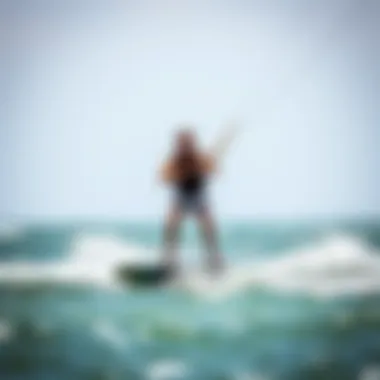
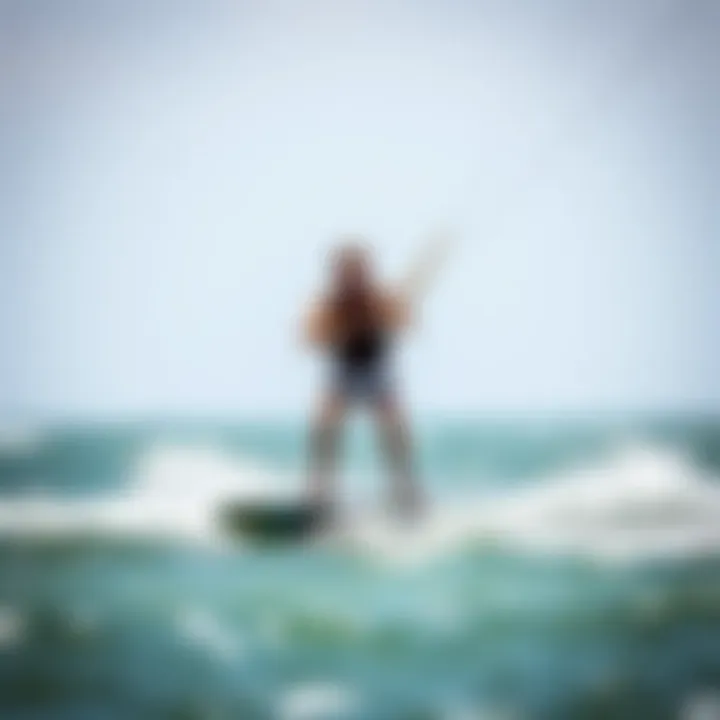
- Rinse After Use: Always rinse your hydrofoil with clean water after each session. Sand, salt, and debris can accumulate and affect performance over time. Be thorough, paying special attention to the connections and the foil itself.
- Inspect Regularly: After every use, it’s wise to inspect your hydrofoil for any signs of wear and tear. Check that everything is securely fastened and look for cracks or chips in the wings and mast.
- Dry Properly: Water can become trapped in the connections between the mast and the board, leading to corrosion or mold. Make sure to let your hydrofoil dry completely before storing it.
- Store Correctly: When not in use, store your hydrofoil in a cool, dry place away from direct sunlight. Cover it if possible to avoid dust collection.
- Use Protective Gear: Invest in a cover or bag designed for hydrofoils. This adds a layer of protection during transportation and storage.
By following these simple steps, you can prolong the life of your DIY hydrofoil and enhance its performance.
Common Issues and Solutions
Even with diligent care, issues can pop up now and then. Being aware of common problems and having actionable solutions will serve you well. Here are a few frequent troubles you might encounter:
- Foil or Wing Damage
- Loose Connections
- Rusted or Corroded Parts
- Dingy Appearance
- Symptoms: Reduced lift, steering difficulties, or unintended vibrations.
- Solution: Check for cracks or dents. Smaller damage can sometimes be repaired with marine epoxy, while larger issues may require a replacement.
- Symptoms: Wobbling or instability during rides.
- Solution: Tighten the screws or bolts connecting the board and mast. If they continue to loosen, consider using thread-locking glue.
- Symptoms: Breakdowns or stiff movement in the mast.
- Solution: Regularly clean and dry all metal components. If corrosion is evident, replace the affected parts.
- Symptoms: Overall aesthetic decline affecting your enthusiasm.
- Solution: Regular cleaning and perhaps the use of a polish designed for composite surfaces to restore shine.
In facing these issues, the key is to stay ahead of the game. Regular monitoring, combined with knowledgeable fixes, means you can tackle potential setbacks smoothly.
"An ounce of prevention is worth a pound of cure."
By embracing a careful maintenance regimen and being prepared to troubleshoot common issues, you empower your DIY hydrofoil to deliver the thrills you seek on the water. For further insights and community assistance, consider checking online forums such as reddit.com/r/Kiteboarding for shared experiences and tips.
Community Insights and Innovations
Understanding the role of community insights in the DIY hydrofoil movement is crucial for kiteboarding enthusiasts. The exchange of ideas, experiences, and innovations leads to advancements that cannot be achieved in isolation. Kiteboarding isn’t just about flying over water; it's about connecting with others who share the same passion. Community contributions foster creativity and support, enabling individuals to push boundaries in design and functionality.
Through online forums, social media groups, and local meetups, kiteboarders share their successes and setbacks. This collaboration enhances knowledge, providing newer kiteboarders with a learning platform based on real-life experiences. The shared stories often uncover common pitfalls in constructing and maintaining a hydrofoil, saving others time and resources. Furthermore, discussions on unique modifications or personal tweaks allow for a continuous evolution of equipment and techniques.
"The learning curve is steep, but the community makes it worthwhile. You learn from both failures and triumphs of others."
Engaging with a community also opens the doors to innovation. Many enthusiasts take it upon themselves to experiment with new materials or designs. Their findings often trickle back into the wider community, leading to improvements in performance, safety, and sustainability. One example is the increasing use of recycled materials in hydrofoil construction, promoting eco-friendliness without sacrificing performance.
Lastly, the sense of belonging to a community acts as motivation. Competing in local events or showcasing one’s DIY hydrofoil piece can enhance a sense of pride and achievement, encouraging ongoing experimentation and development.
Learning from Fellow Enthusiasts
In the realm of DIY hydrofoils, learning from fellow enthusiasts is akin to having an endless reservoir of knowledge. These individuals offer a wealth of diverse experiences that can inspire new designs or construction techniques. When you hear stories about someone who successfully adjusted their hydrofoil for better lift or improved stability, it demonstrates that trial and error often yields invaluable lessons. By engaging in this dialogue, the community members navigate their journeys together.
Sharing tricks of the trade can be immensely beneficial. From specialized gluing techniques to choosing the right angle for mounting the mast, these are insights that can make or break a hydrofoil project.
Self-taught kiteboarders who venture into DIY hydrofoiling often document their processes online, providing tutorials, videos, or posts that detail their projects. This transparency lays the groundwork for informed decision-making when undertaking a similar project. For instance, someone might post a detailed breakdown of their hydrofoil shaping technique, which could enlighten a beginner immensely.
Additionally, many enthusiasts participate in local workshops or online talks to share their experiences. The exchange isn’t merely limited to successes; discussions about failures and challenges also play a vital role. For example, if someone faces structural failure in their one-off design, it serves as a cautionary tale for others, potentially preventing similar mishaps.
Emerging Trends in Hydrofoil Design
As the DIY hydrofoil community matures, several trends begin to surface, demonstrating how innovation feeds into kiteboarding practices. The use of 3D printing technology, for instance, is starting to revolutionize how enthusiasts craft their hydrofoils. This technology allows for precise designs that can be tinkered with at a moment's notice.
Furthermore, the trend towards modular designs is gaining traction. Modular hydrofoils enable kiteboarders to swap out components or upgrade certain parts without needing to overhaul the entire system. This flexibility encourages continual improvement and adaptation based on performance feedback.
Another notable shift is towards sustainability. Kiteboarders are becoming increasingly conscious of their environmental footprint. As a result, many are experimenting with bio-based materials or recycled plastics in their hydrofoil construction. Not only does this practice resonate with eco-conscious members of the community, but it also spurs conversations about longevity and recyclability.
As these trends unfold, they often reflect the community’s values and aspirations, proving that the world of DIY hydrofoiling is not static but rather a dynamic field ready for exploration. By staying attuned to these developments, kiteboarders can remain at the forefront of design thinking, ensuring they make informed choices in their crafting endeavors.
These community insights and innovations stand as vital pillars, reinforcing the idea that when kiteboarders come together, they elevate the sport to unprecedented heights.
Future of DIY Hydrofoiling
The future of DIY hydrofoiling is a subject that resonates deeply with kiteboarding enthusiasts, offering not only potential innovations but also a pathway to a more personalized riding experience. As the sport grows in popularity and technology advances, understanding the directions in which DIY hydrofoiling may head can greatly benefit those eager to craft their own setups. By keeping an eye on trends and advancements, individuals can stay ahead of the curve, pushing their performance boundaries while enjoying kiteboarding in new and exciting ways.
Technological Advancements in Materials
One of the most significant aspects shaping the future of DIY hydrofoiling is the continuous progress in materials technology. Today’s kiteboard builders have more options than ever before. Here's a closer look at what’s emerging:
- Carbon Fiber and Kevlar: These materials are becoming more common for their lightweight yet sturdy characteristics. While carbon fiber is known for its high strength-to-weight ratio, Kevlar adds impact resistance, making them ideal for building hydrofoil wings that can withstand the rigors of kiteboarding.
- Thermoplastic Composites: An increasingly popular choice, these materials offer flexibility during manufacturing, allowing creators to mold their hydrofoil components with exact specifications. Not only do they provide great durability, but they are also lighter than traditional composites.
- Foam Core Technologies: Advancements here allow for increased buoyancy and reduced overall weight. Builders can create wings with optimal hydrodynamics while maintaining structural integrity.
In the world of DIY hydrofoils, it’s wise to keep your finger on the pulse. If you want to stay competitive and enhance your experience, investing time to understand these materials will pay dividends. Knowledge of new materials facilitates innovation, enabling enthusiasts to customize their equipment for performance gains.
A Vision for Sustainable Practices
As we gaze into the future, it’s crucial that DIY hydrofoiling embraces sustainability. Kiteboarding, as an action sport, often comes with challenges concerning environmental impact, and this is where sustainable practices come into play. Here are some aspects to consider:
- Eco-Friendly Materials: The use of recycled or sustainably sourced materials is becoming important. Materials like bamboo or recycled plastics can be woven into designs, minimizing one's footprint while also supporting marine conservation efforts.
- Repairable Designs: Moving towards creating hydrofoils that are easier to repair not only extends their lifespan but also reduces waste. Creating modular parts that can be replaced or upgraded without needing a whole new setup can not only save money but also be kinder to the environment.
- Community Recycling Programs: Encouraging local kiteboarding communities to set up recycling initiatives can help find new homes for old equipment, creating a culture that prioritizes sustainability within the sport. Rather than discarding old gear, consider donating or repurposing it, fostering a sense of unity within the kiteboarding family.
Embracing sustainable practices now can set a positive tone for future generations of kiteboarders. By integrating eco-conscious choices into DIY hydrofoiling, enthusiasts can enjoy the sport while being mindful of their impact on the environment.
As kiteboarding enthusiasts look ahead, blending the excitement of technology with the need for environmental responsibility will shape the very essence of DIY hydrofoiling. By staying informed and adaptive, individuals not only enhance their own riding experiences but contribute positively to the broader world of kiteboarding.















